Syria
Syria is now open to American tourists! For several years, Syria has been closed to Americans. This past summer, Syria’s policy changed. When I heard this news, I jumped at the opportunity to visit this colorful and historic country.
Foreigners aren’t permitted to travel in Syria independently, so I booked a private tour with Ayoub Smadi at Marrota Travel &Tourism. Ayoub did a superb job organizing my security clearance, obtaining my visa authorization, customizing my tour, arranging my transportation, booking my hotels, and providing a friendly and knowledgeable guide — all for a very reasonable price.
Most tourists enter Syria by land from Lebanon because the only direct flights to Damascus are from the Persian Gulf. Crossing overland from Lebanon into Syria, I stood in several queues to present my documentation, purchase my visa ($160) and get my passport and entry permit stamped multiple times. I was thankful that Ayoub had arranged fixers, one from Lebanon and the other from Syria, to usher me through this process. Incidentally, automobiles aren’t permitted to cross the border between Lebanon and Syria. So, Ayoub coordinated a driver from Beirut to meet my driver from Damascus.
In Syria, I travelled to Damascus, then north to Aleppo near the Turkish border, and finally west to Palmyra near Iraq. In all, I was in Syria for five days. Although Palmyra wasn’t the first place I visited, I’ll start my travelogue there because it’s the most famous site in Syria.
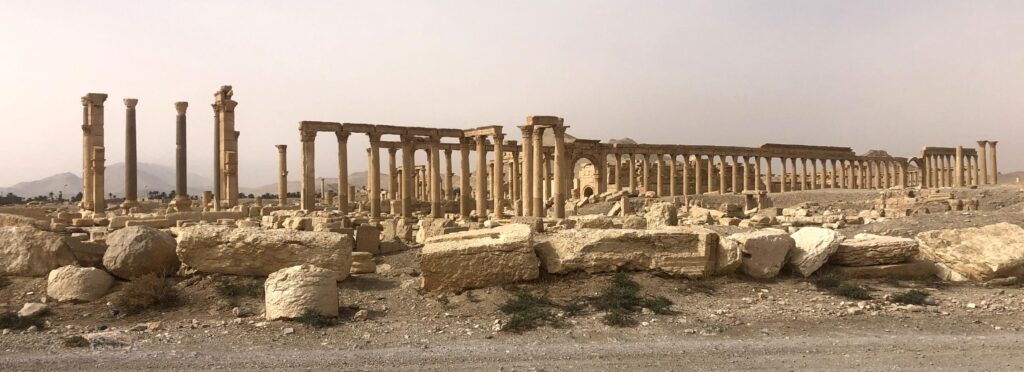
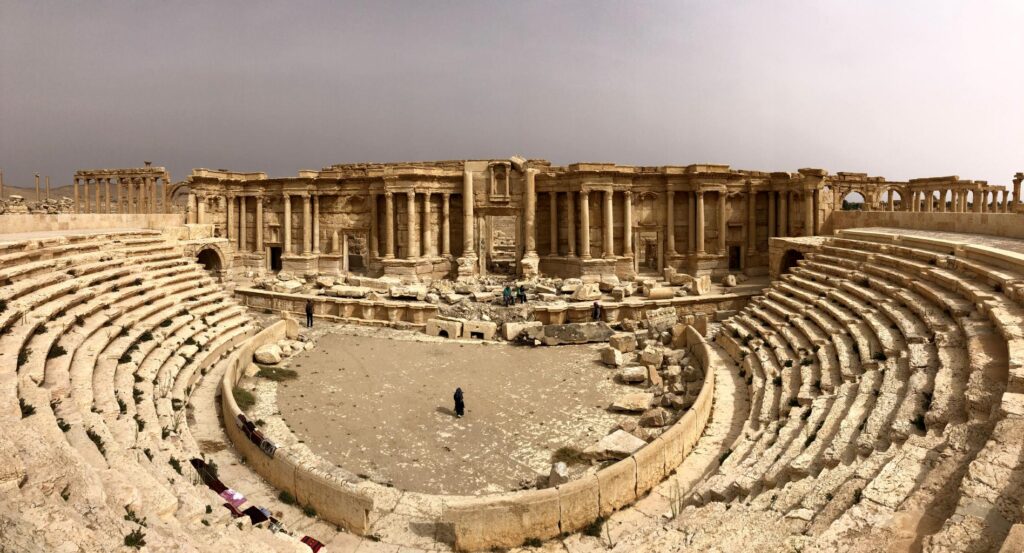
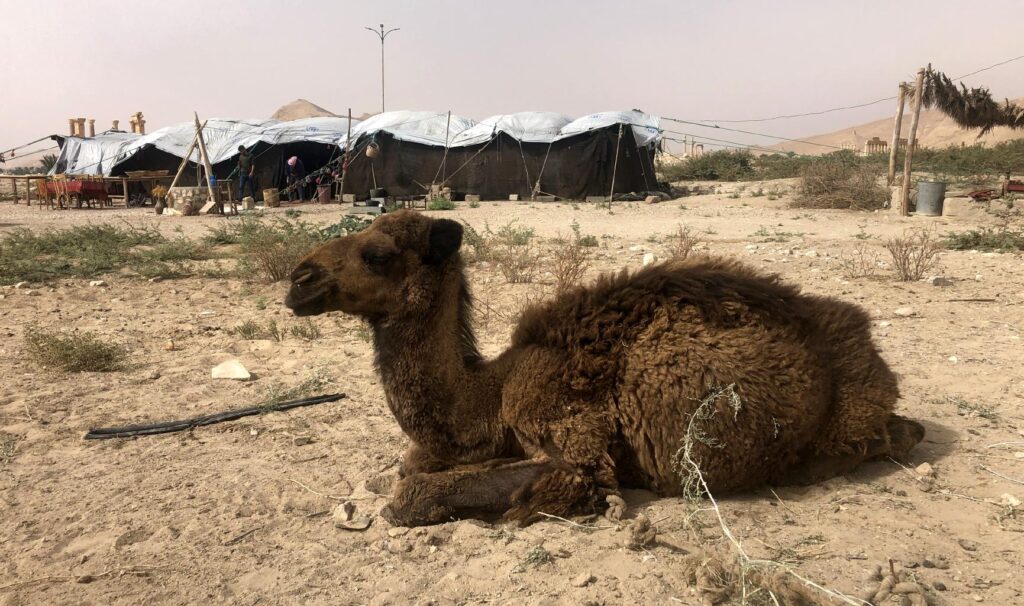
Syria is an ancient country, Palmyra was once a wealthy oasis on the Silk Road, connecting the Roman empire to Mesopotamia and the Far East Even after the Ottomans conquered Constantinople in 1453 — effectively closing the Silk Road — Palmyra’s temples, coliseum and baths remained standing, surrounded by a settlement of farmers and herders. In the 20th century, there was even a luxury resort where folks enjoyed bathing in salubrious spring waters.
This all came to an end when ISIL invaded Palmyra in 2015 and attacked the Roman monuments with sledgehammers and explosives. Today, Palmyra is a ghost town with nomad tents and camels to service the few tourists who come here. Russia, an ally of Syrian President Bashar Assad’s government, has begun restoring Palmyra’s triumphal arch, but progress is slow and funding is limited. Although I didn’t expect to see much in Palmyra, I was impressed by how many Roman ruins remain in this desolate place. Palmyra was once a vast and noble city.
Almost as ancient as Palmyra is the Citadel of Aleppo, considered to be one of the oldest and largest castles in the world. Although much of this fortress was built in the 12th century, the hill on which it stands has been a stronghold for Greeks, Armenians, Romans, Byzantines, Ayyubids, Mamluks and Ottomans. In ancient times, the patriarch Abraham is said to have grazed his sheep here. Although the citadel was damaged in 2012 during the Syrian Civil War and further weakened by the magnitude 7.8 earthquake on February 6, 2023, it’s still an imposing structure.
Before going to Aleppo, I was informed that the Citadel was closed indefinitely because aftershocks from February’s quake might cause arches, walls or towers to collapse. Nevertheless, I was determined to see the interior of this legendary fortress. So, when we arrived, Wasim explained to the citadel’s director that a seismologist from Berkeley had come to Aleppo to assess the earthquake damage. Thanks to Wasim’s charms, I was invited in for a full tour of the citadel … followed by an hour in the director’s office sipping Syrian coffee, sampling dates and figs, and consulting on seismic risk. You never know when a degree in seismology will come in handy!
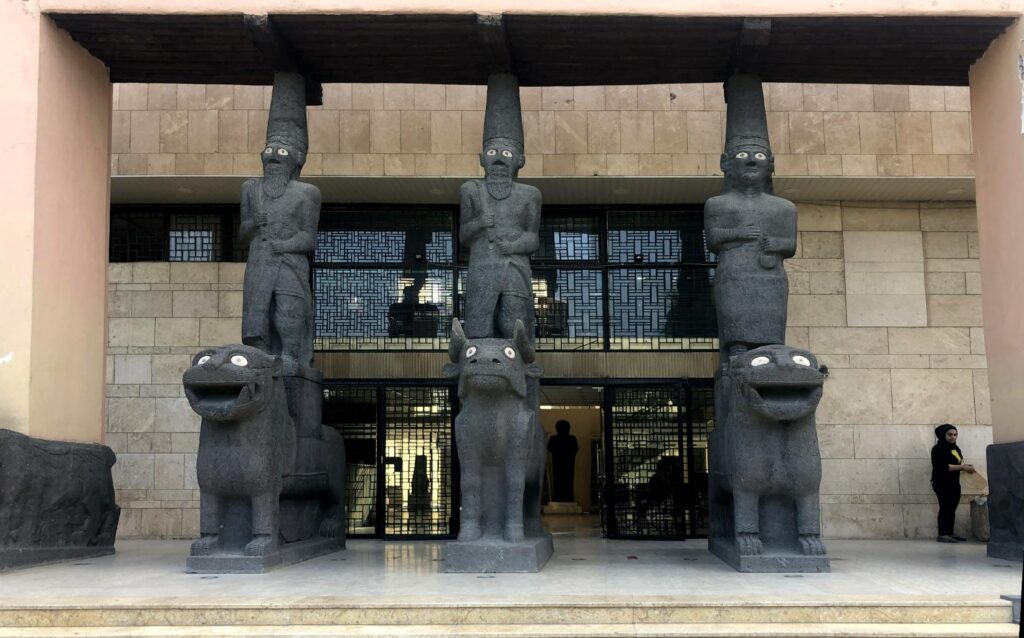
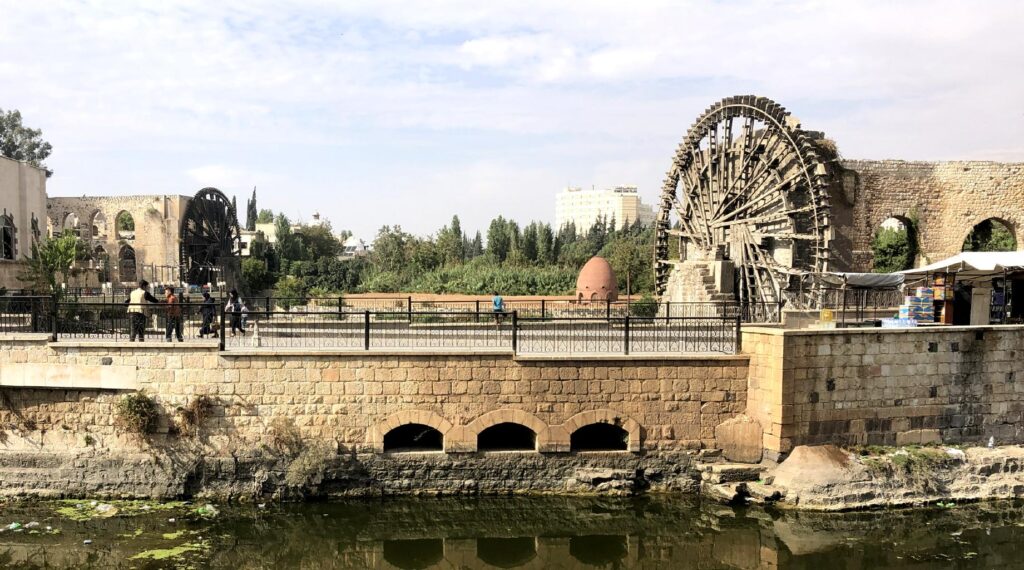
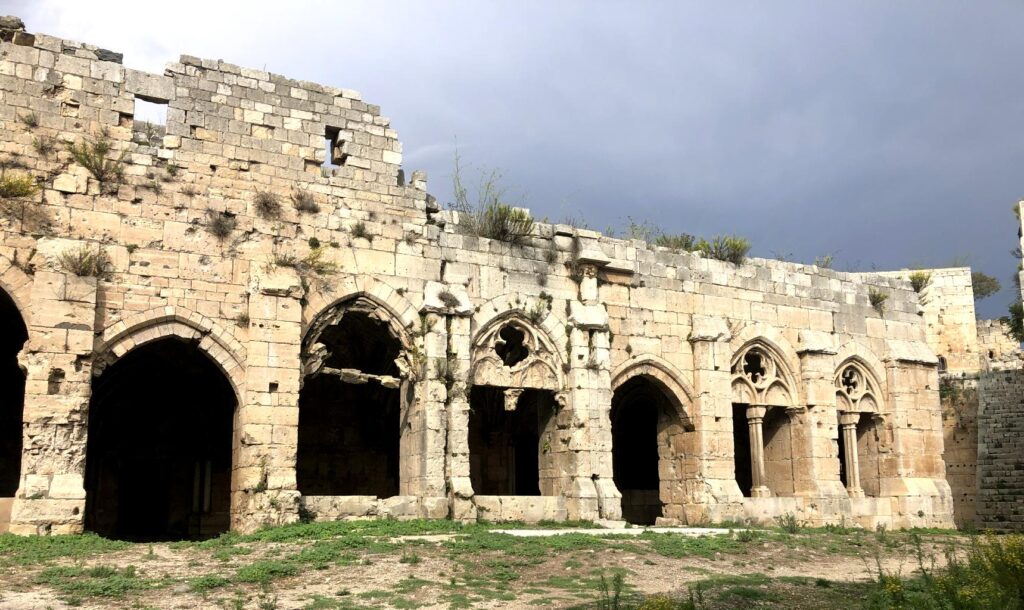
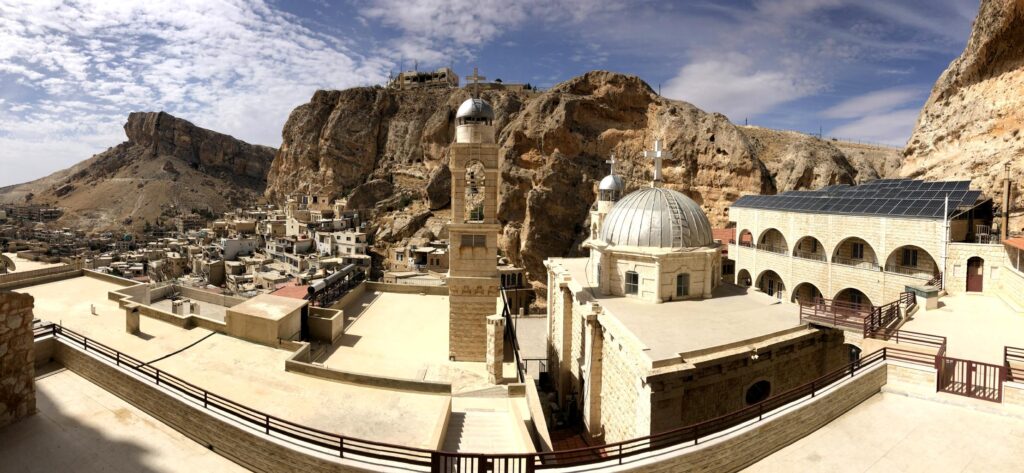
Syria has many historic and holy sites. The National Museum of Aleppo is filled with artifacts from the Stone Age to the Middle Ages. In Hama, the Roman water wheels and aqueducts are still somewhat functional. Krak des Chevaliers is a medieval fortress built by the Knights Hospitaller. The cliffside Convent of Saint Thecla in Maaloula attracts pilgrims from all over the world.
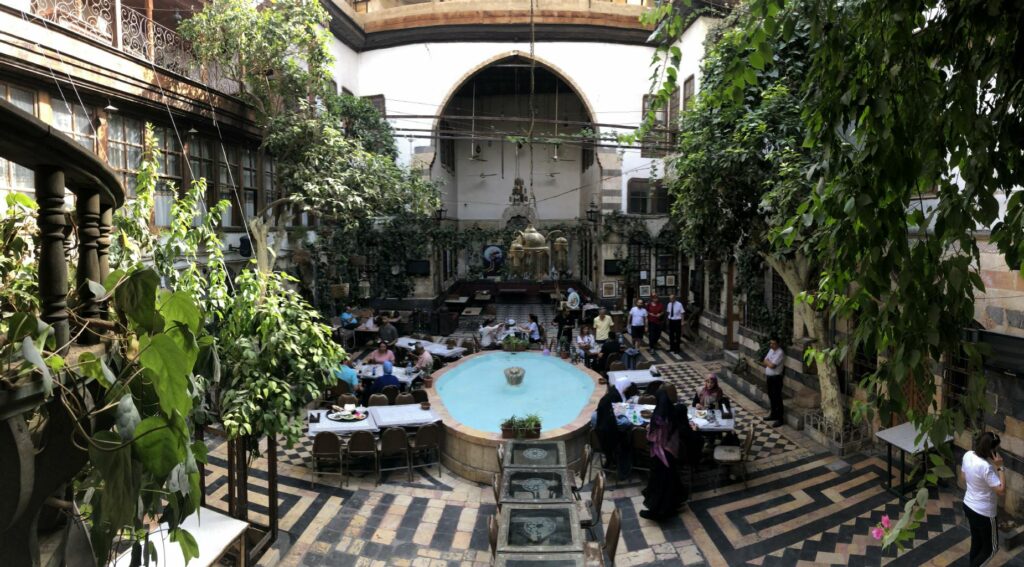
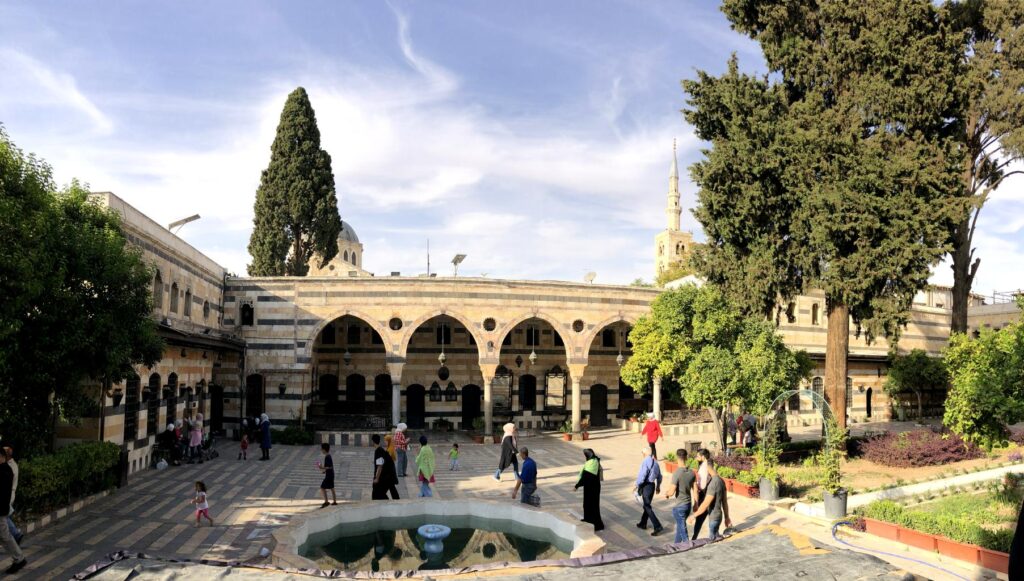
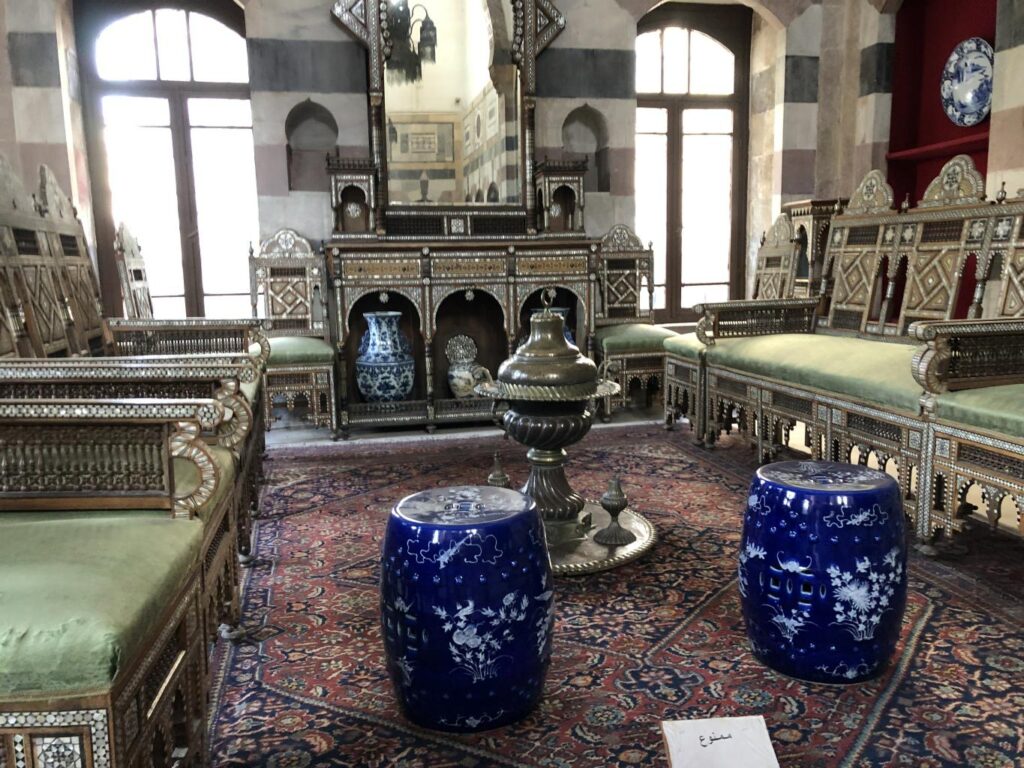
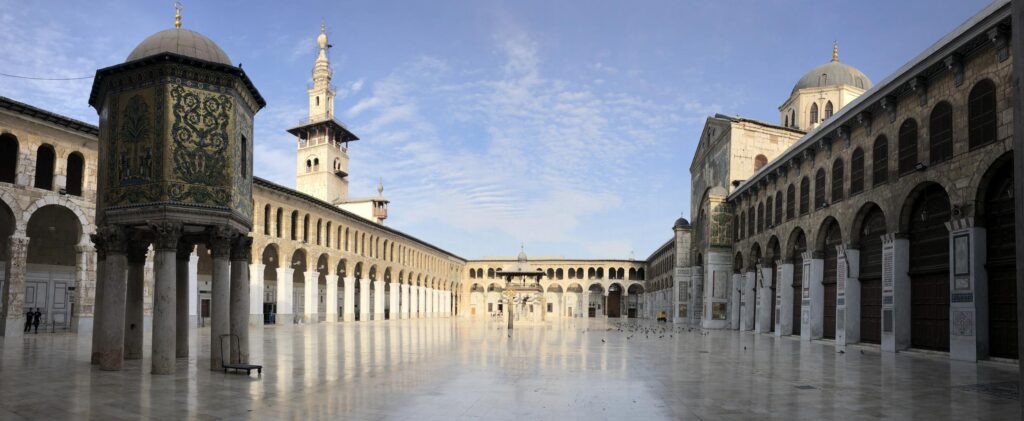
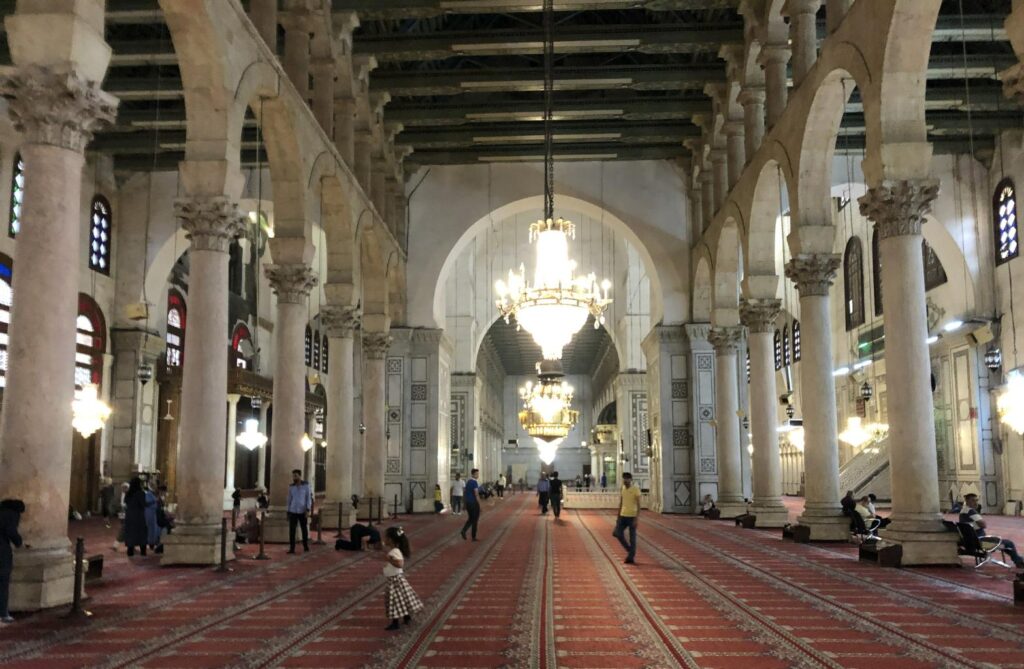
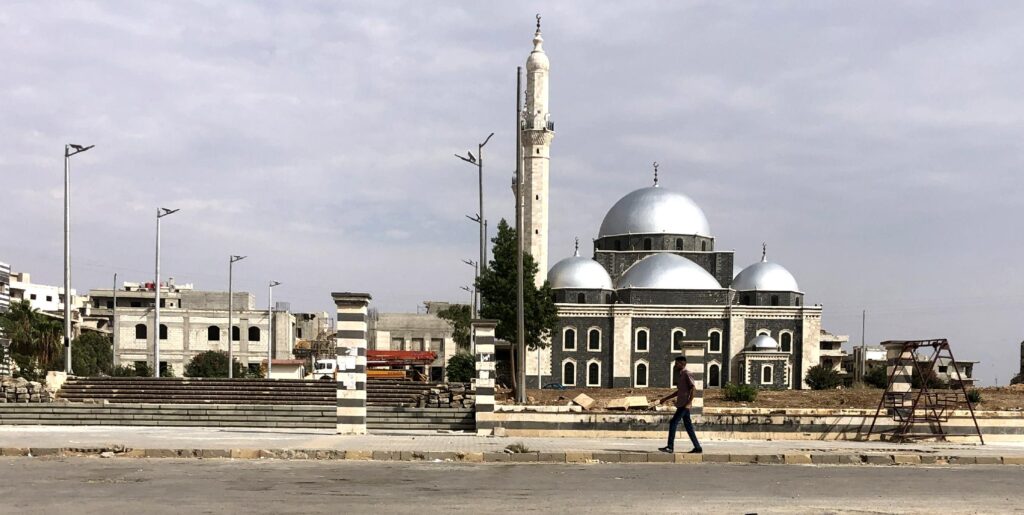
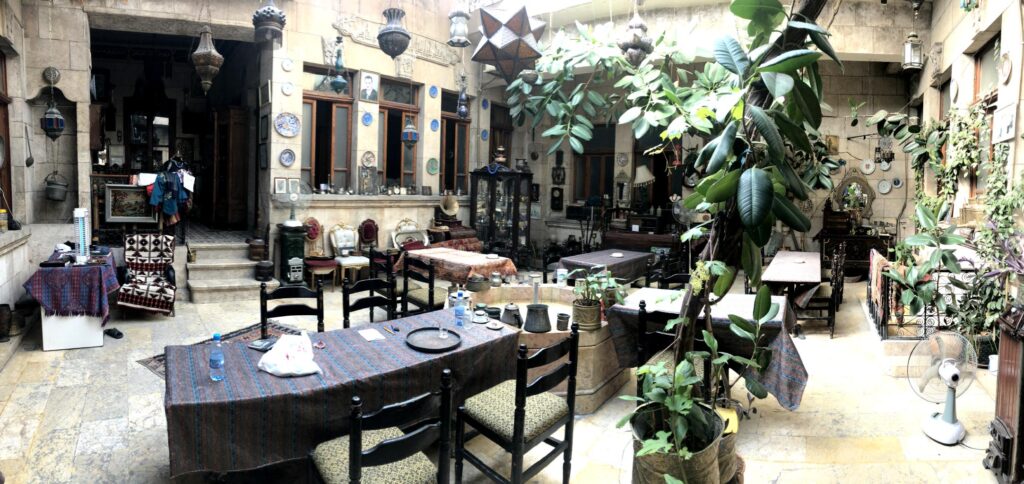
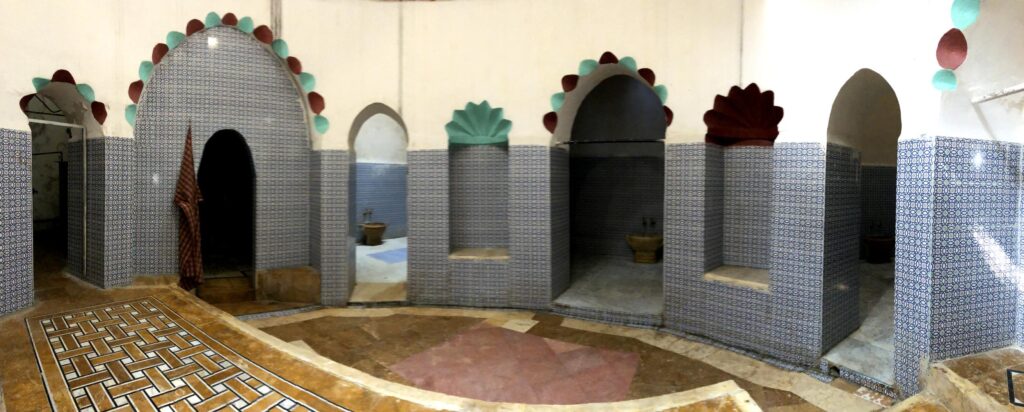
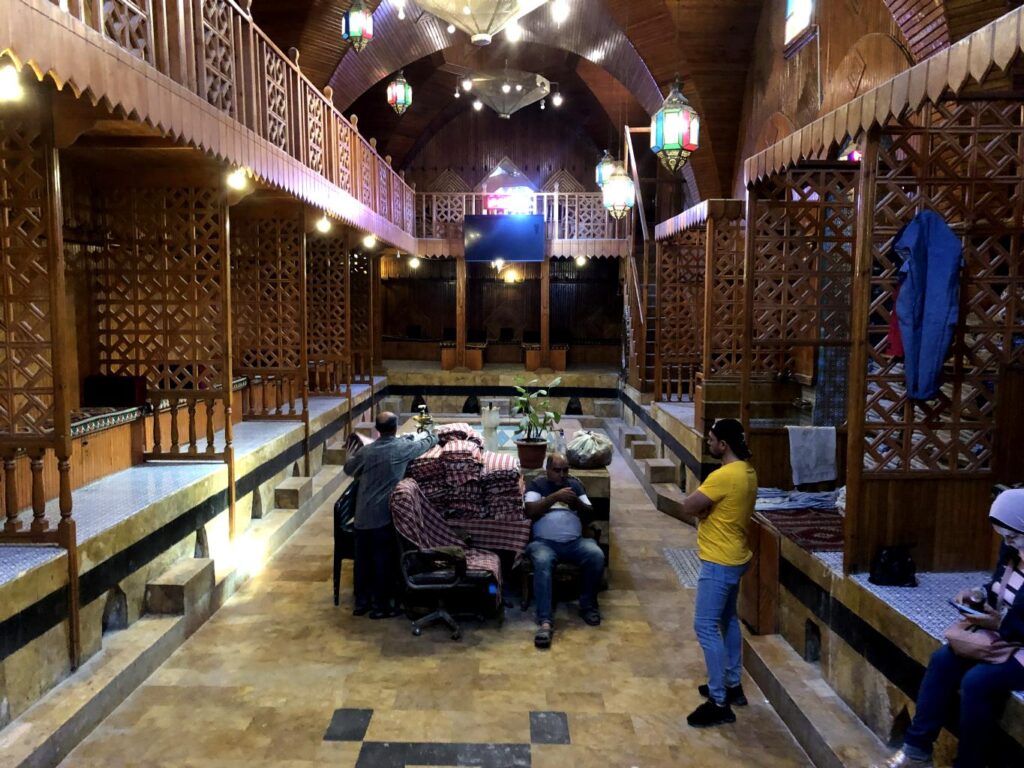
In addition to big name attractions, the old cities of Damascus and Aleppo are full of well-preserved architectural delights that are still in use.
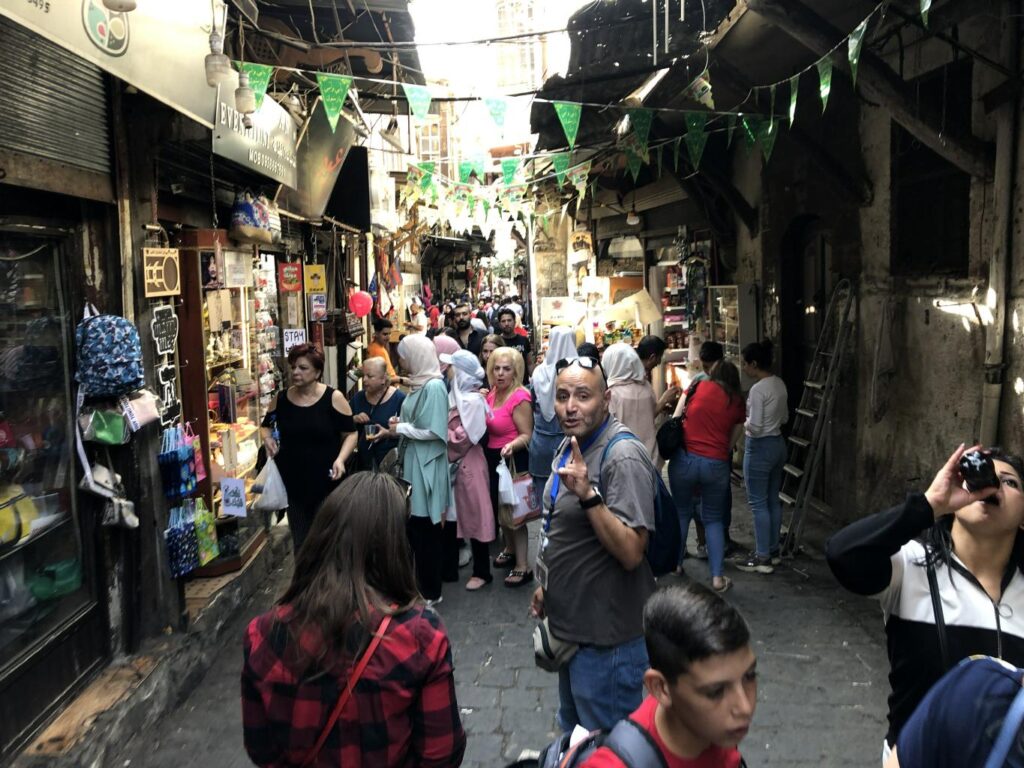
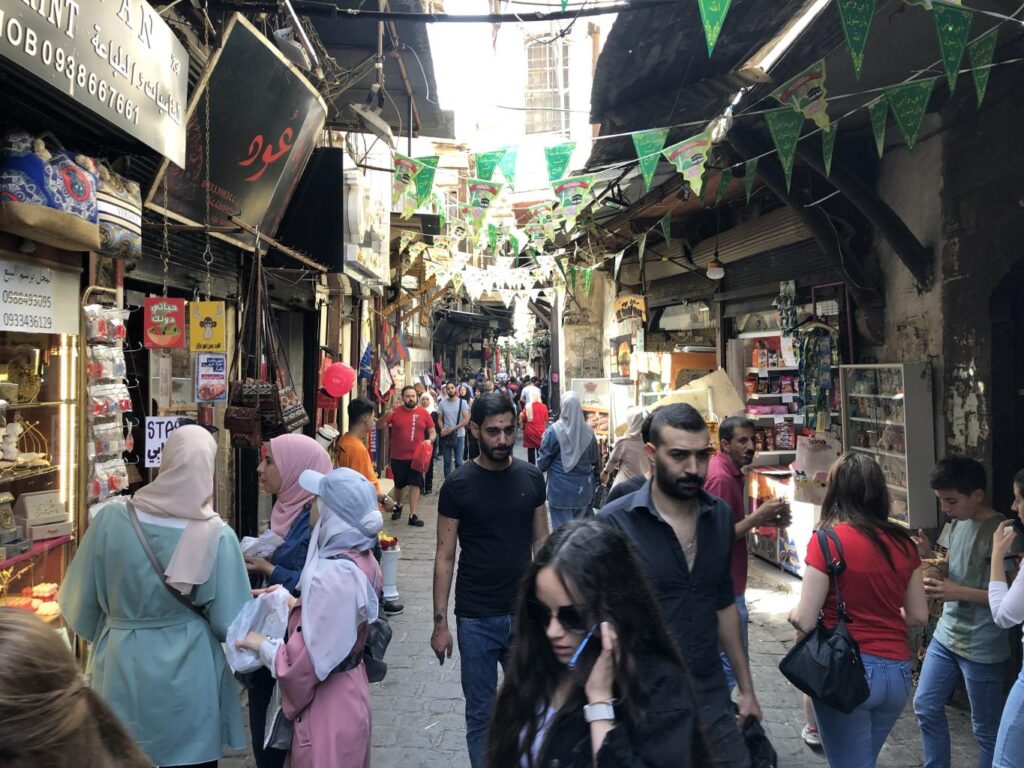
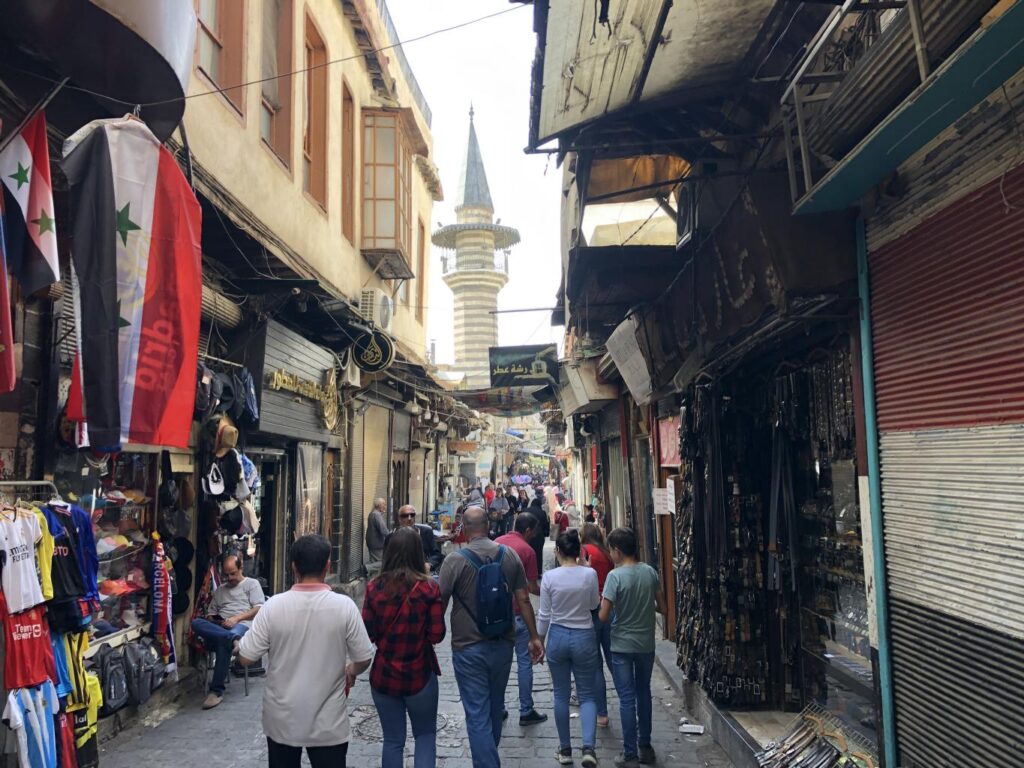
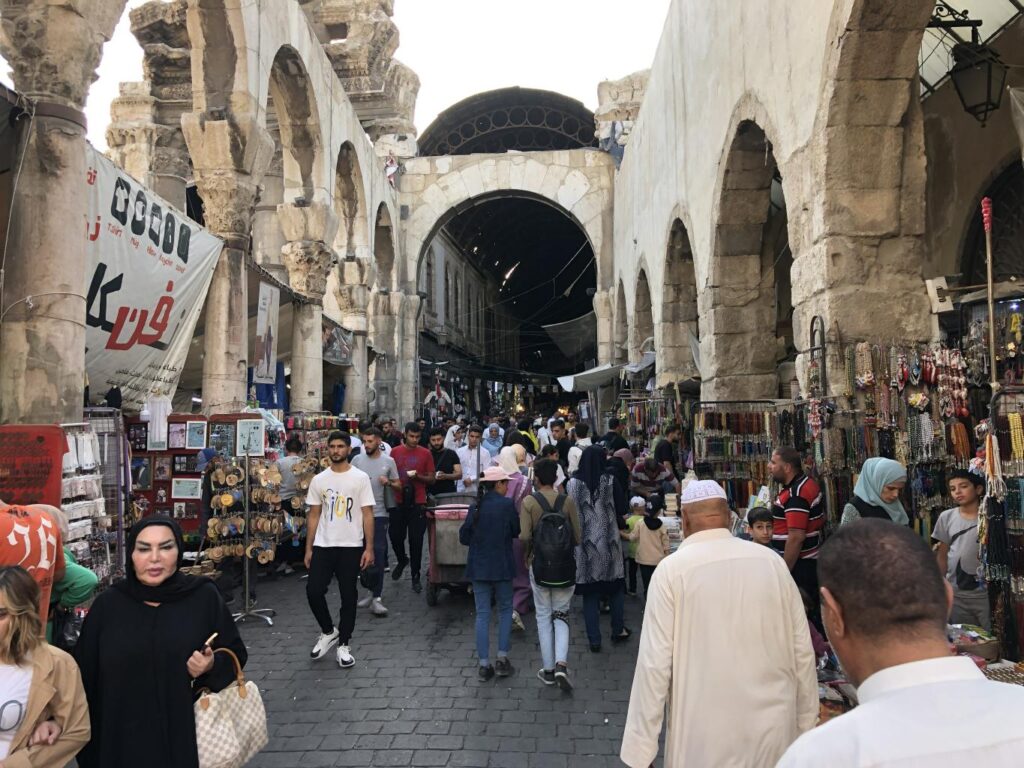
My favorite hangout was the old city of Damascus. Its gigantic, colorful market is packed with shops which bustle with activity from early morning until late at night. I could’ve wandered for days through its maze of narrow alleys.
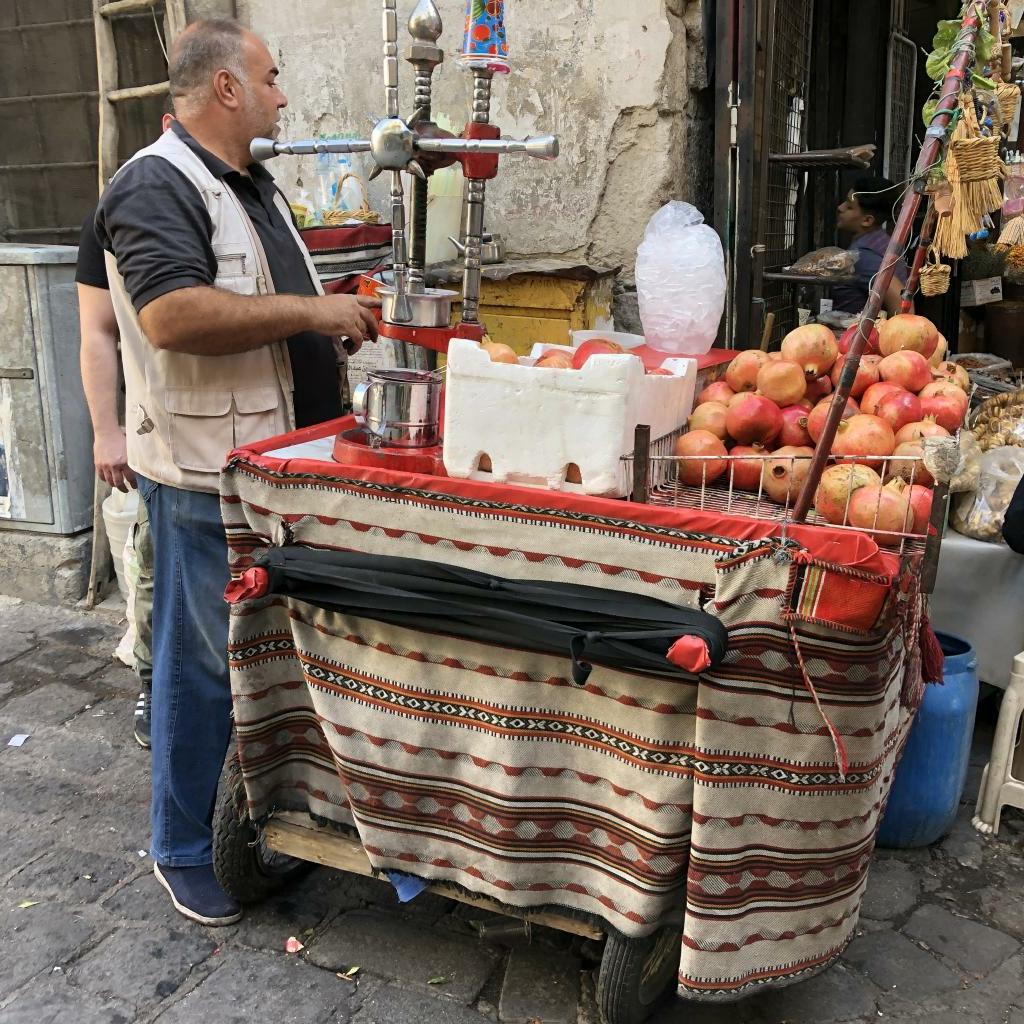
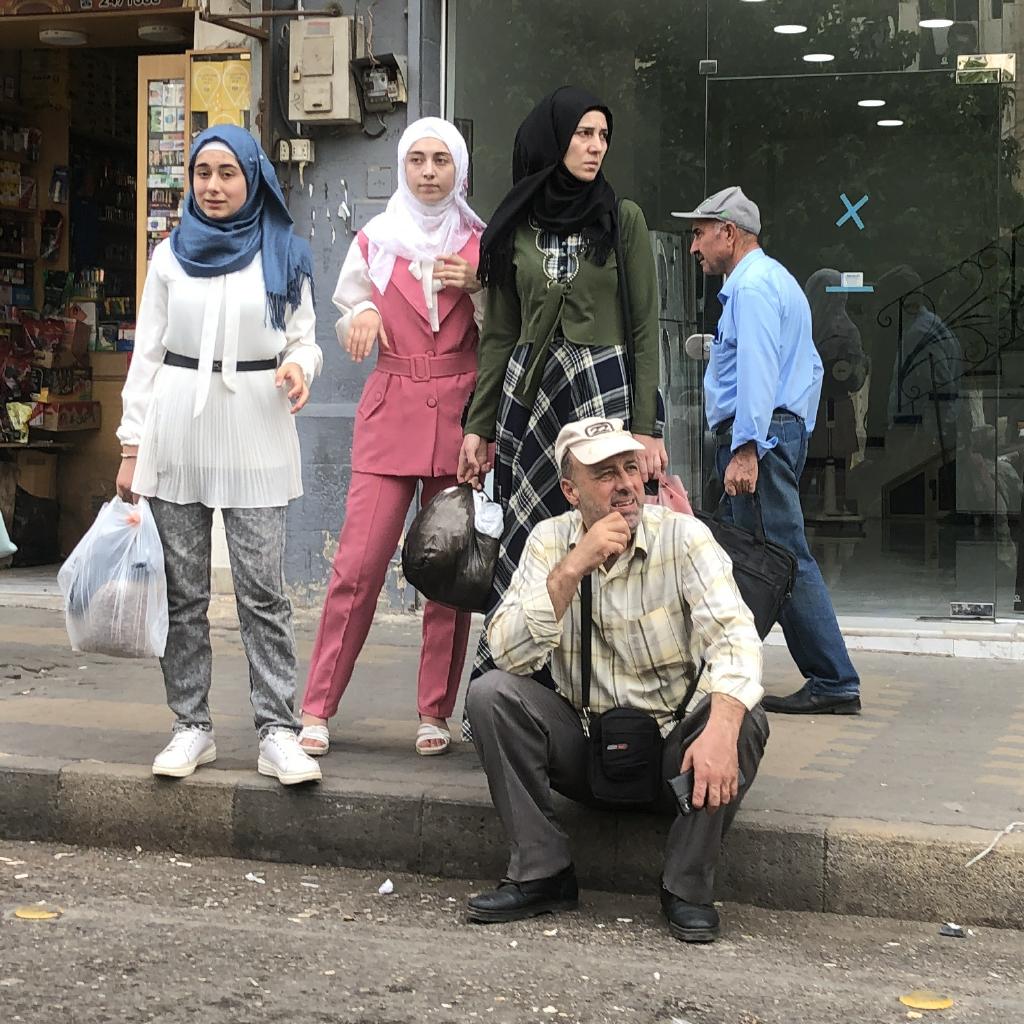
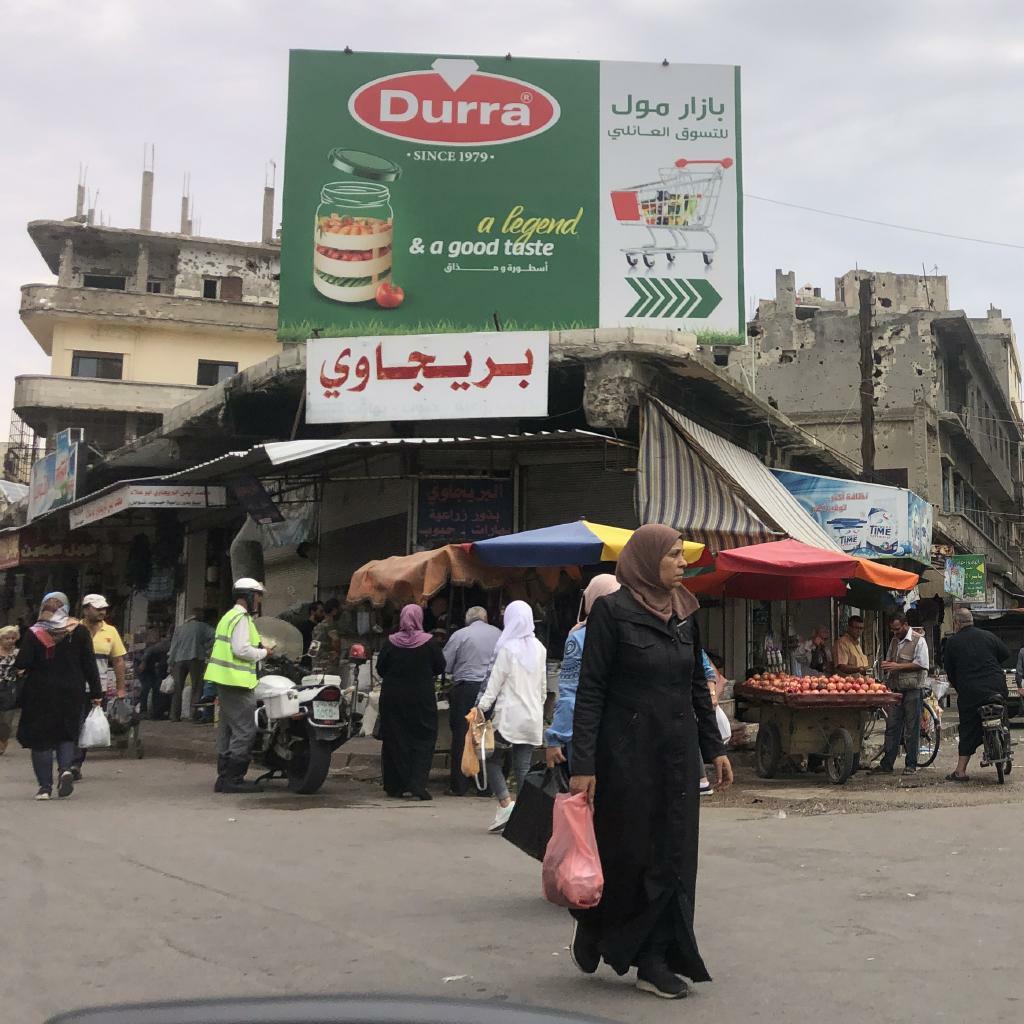

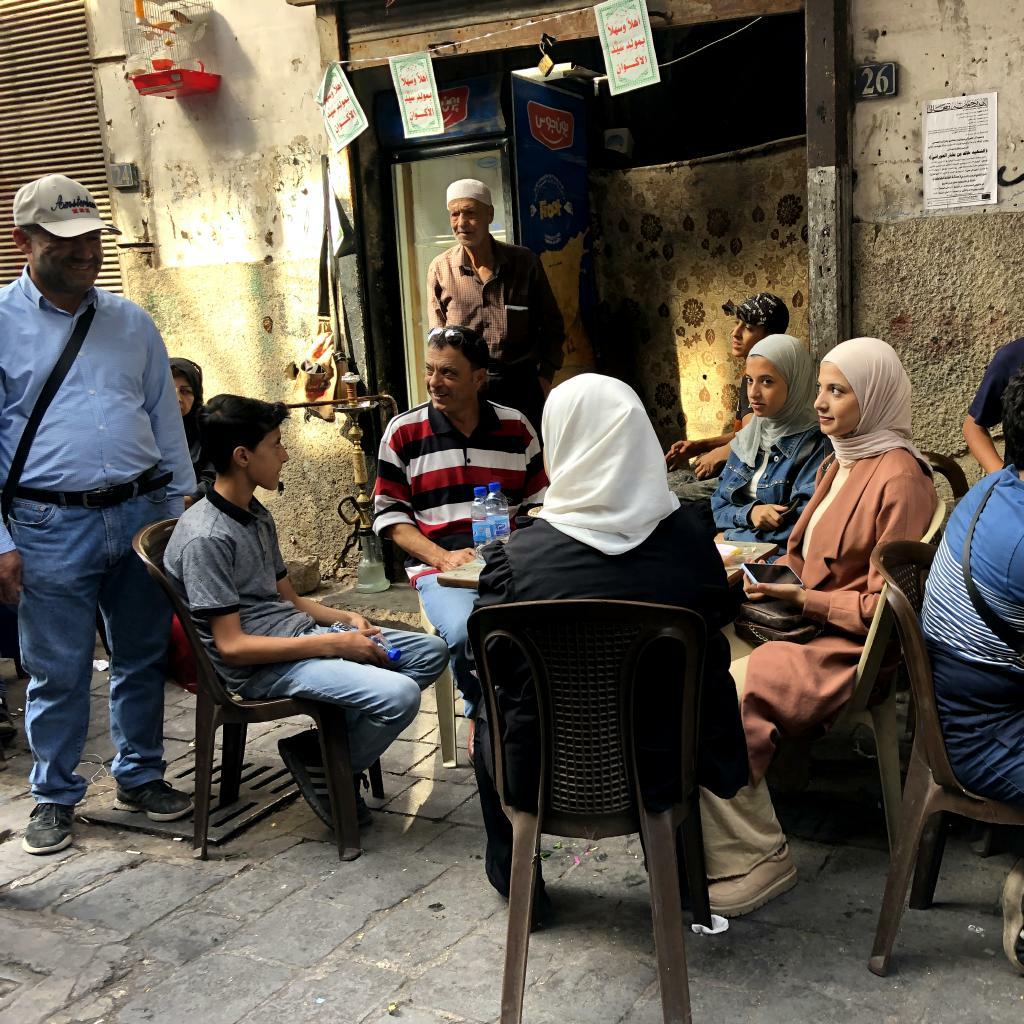
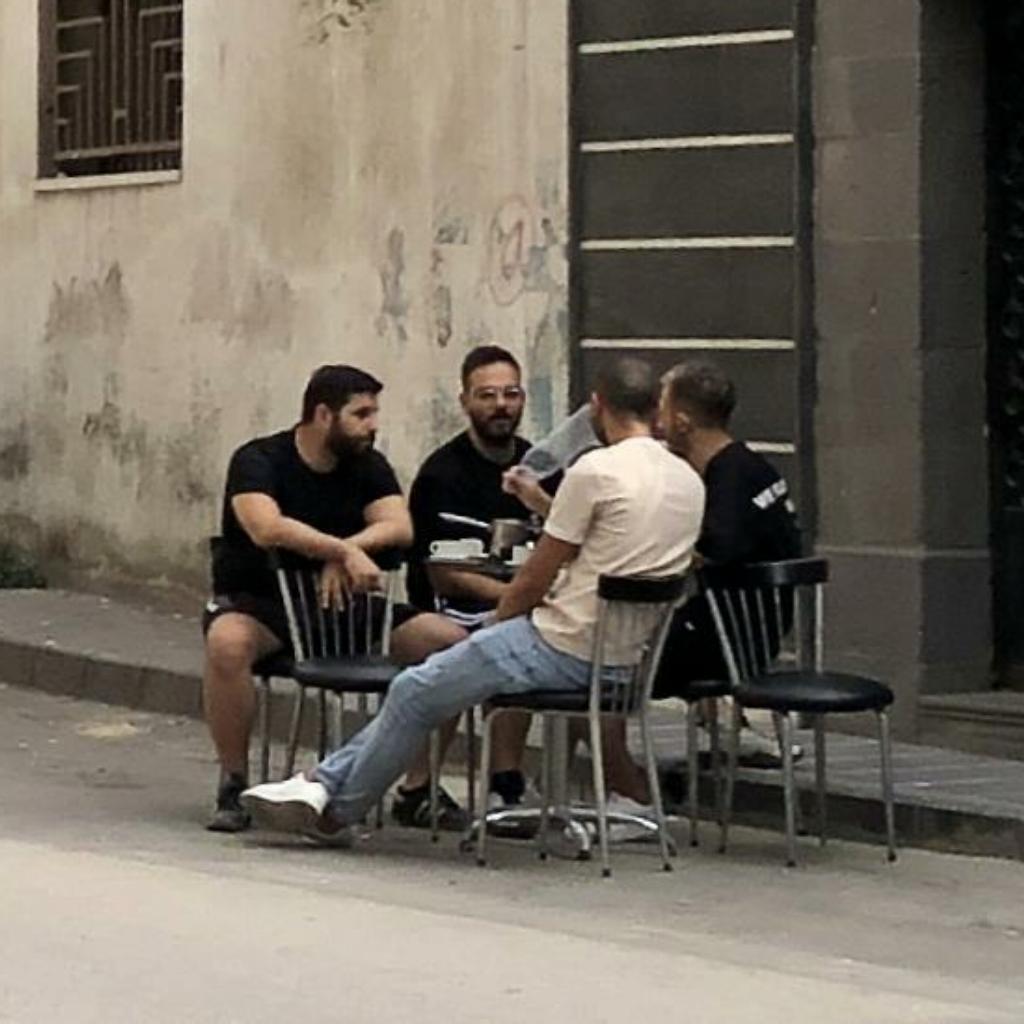
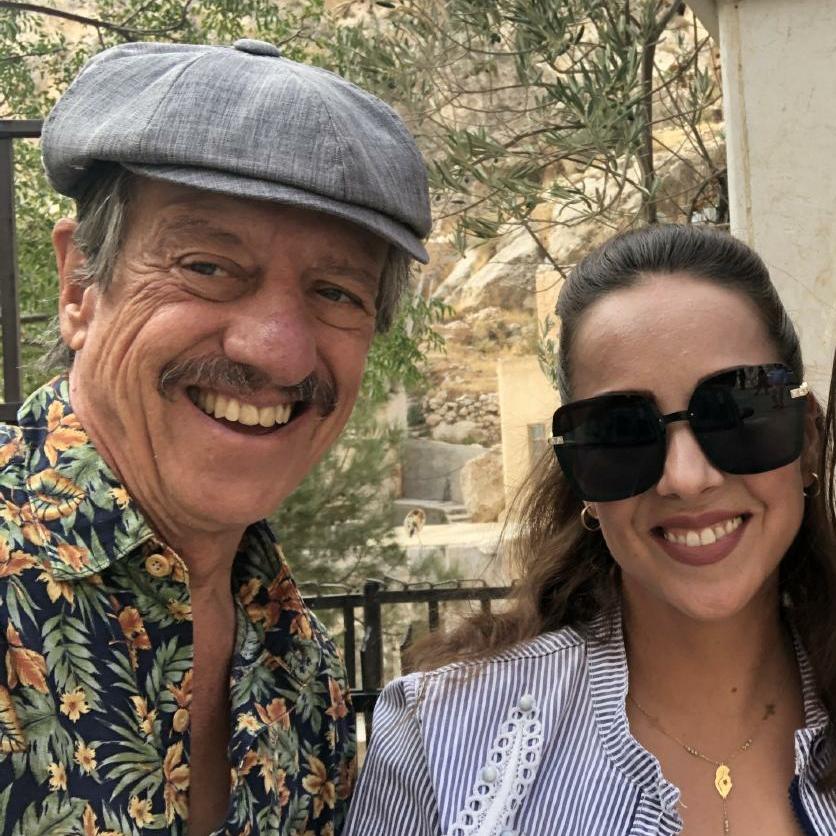

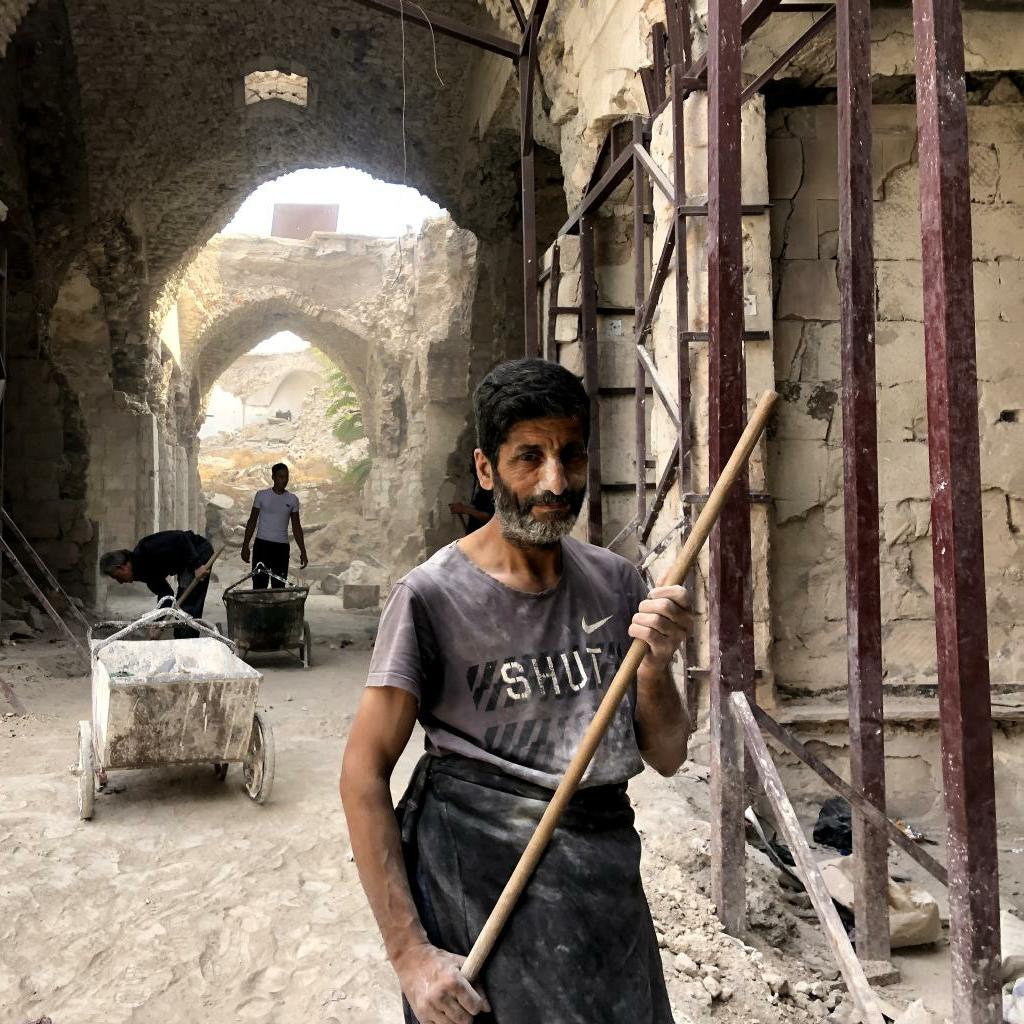
In Damascus’s old city I met friendly people who were pleased to meet and talk with an American.
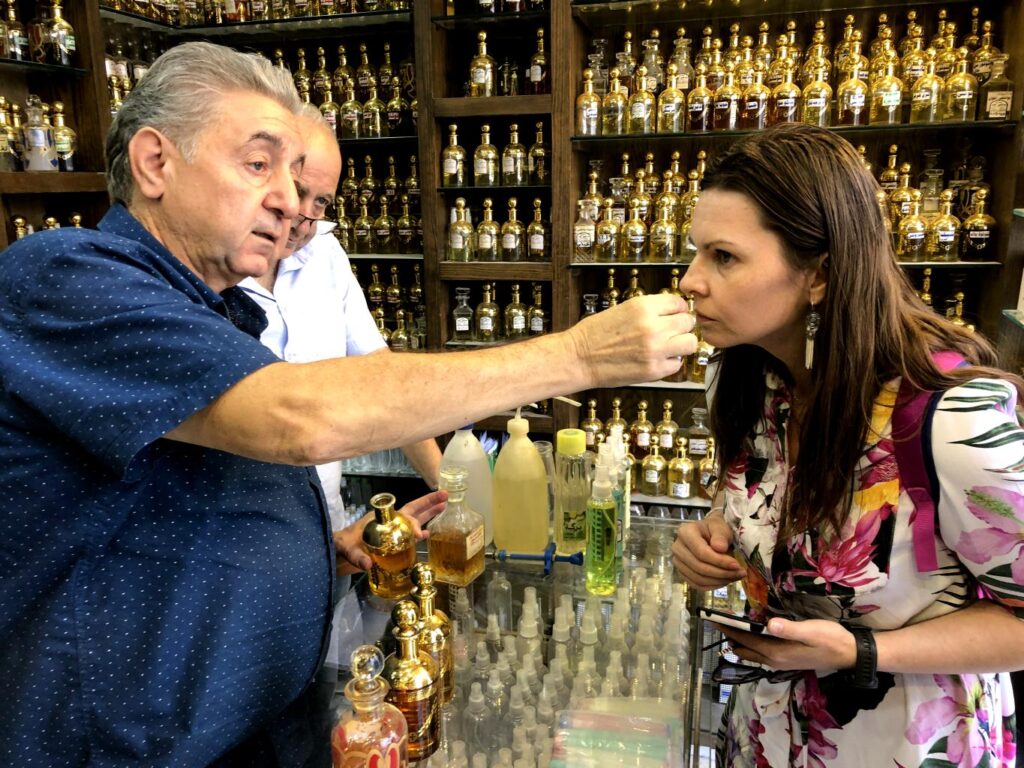
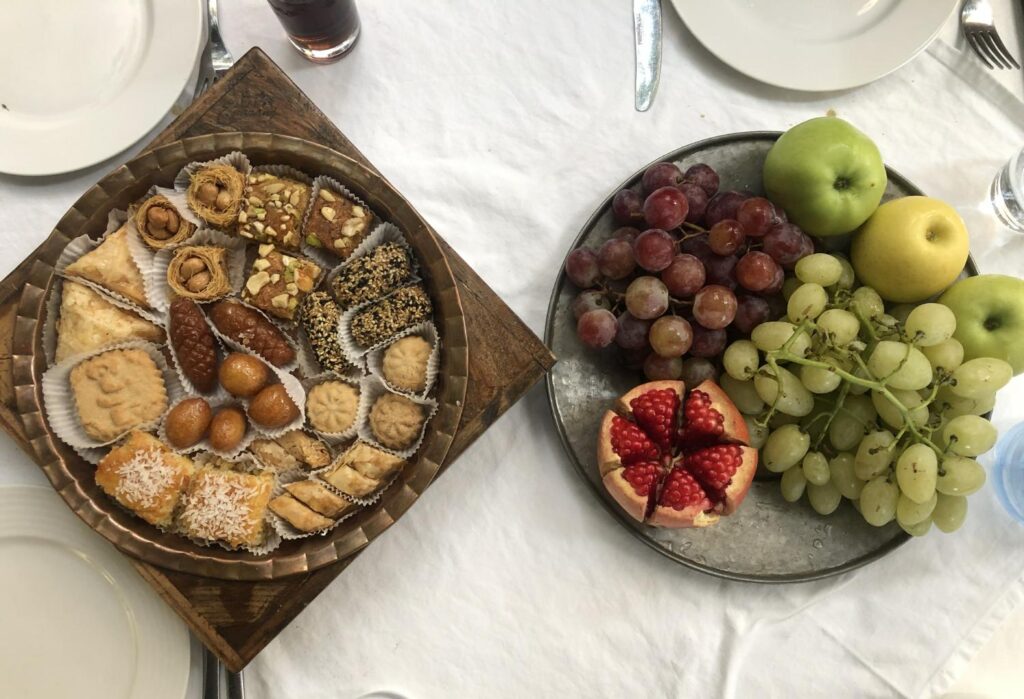
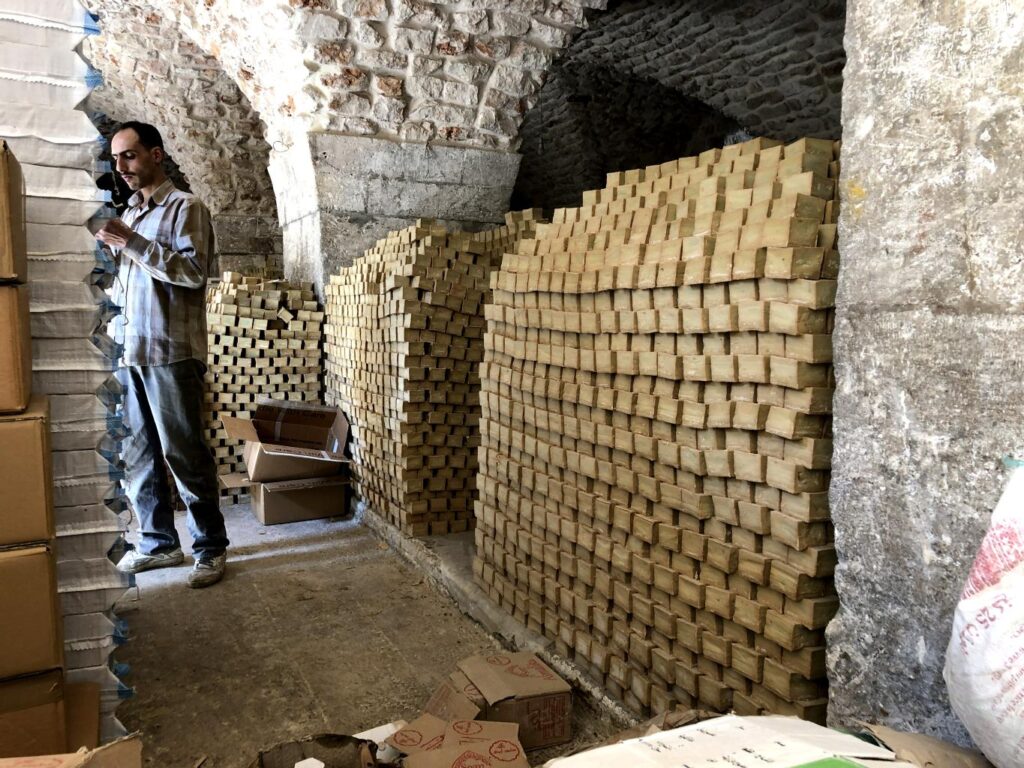
Syria is a sensory delight. I visited a perfume shop selling myrrh and frankincense. The dessert platter shown above is typical of the delicious foods I ate. The Zanabili soap factory in Aleppo claims to be where soap was invented 5,000 years ago. The nearby neighborhood smells like olive oil and laurel berries.
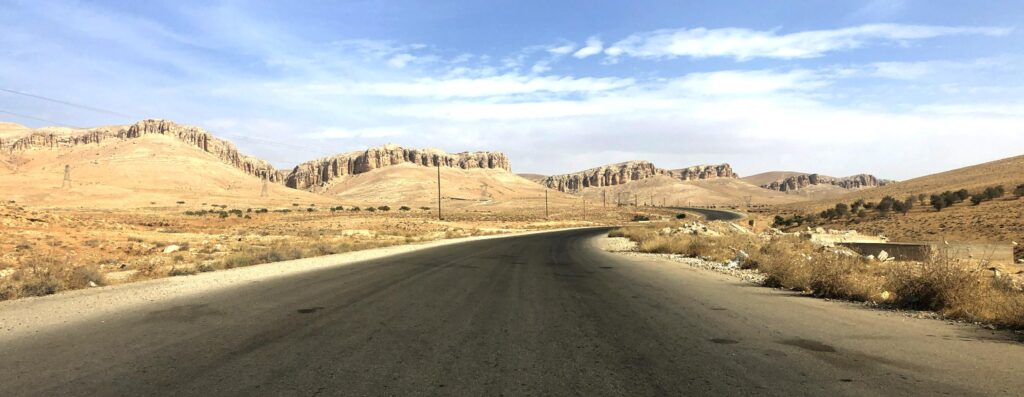
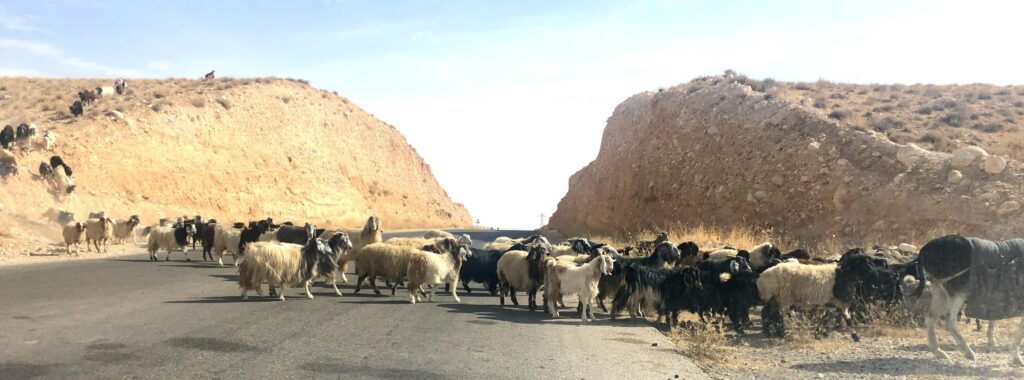
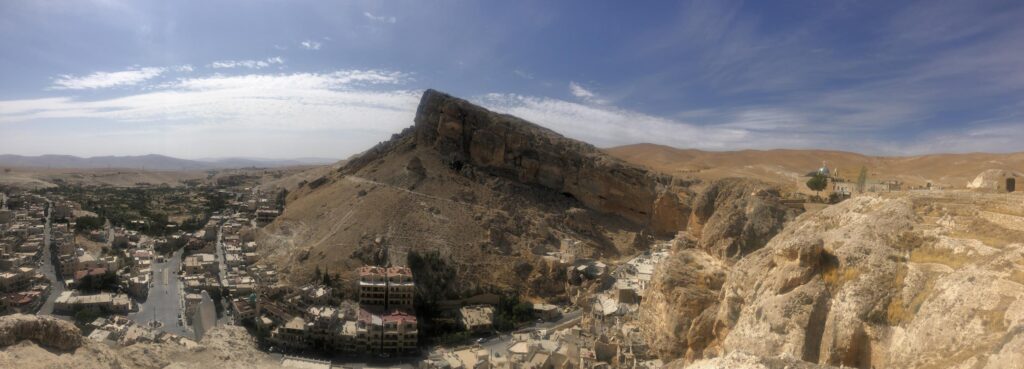

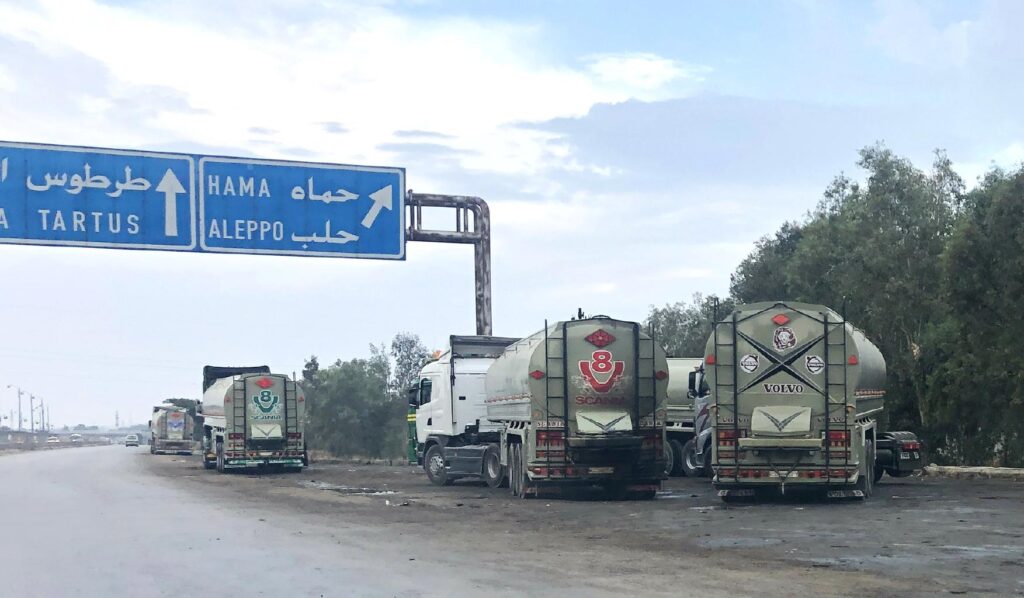
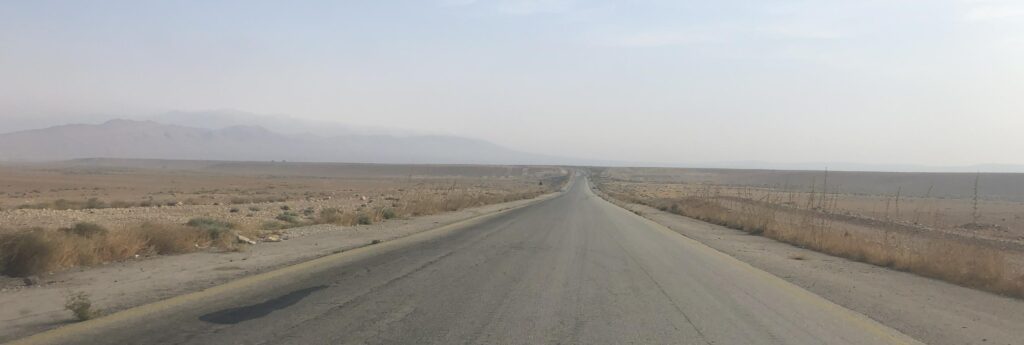
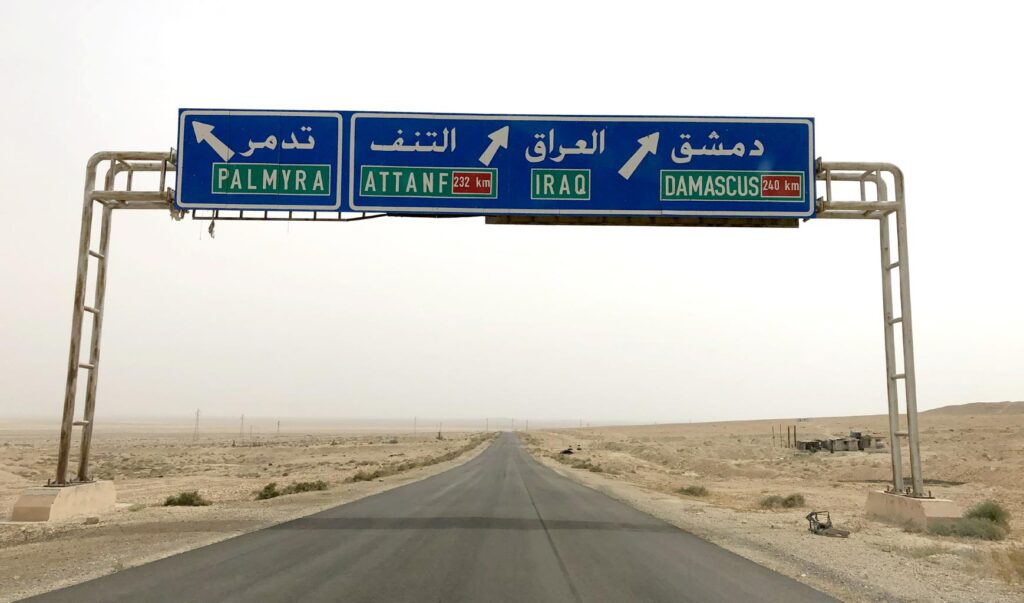
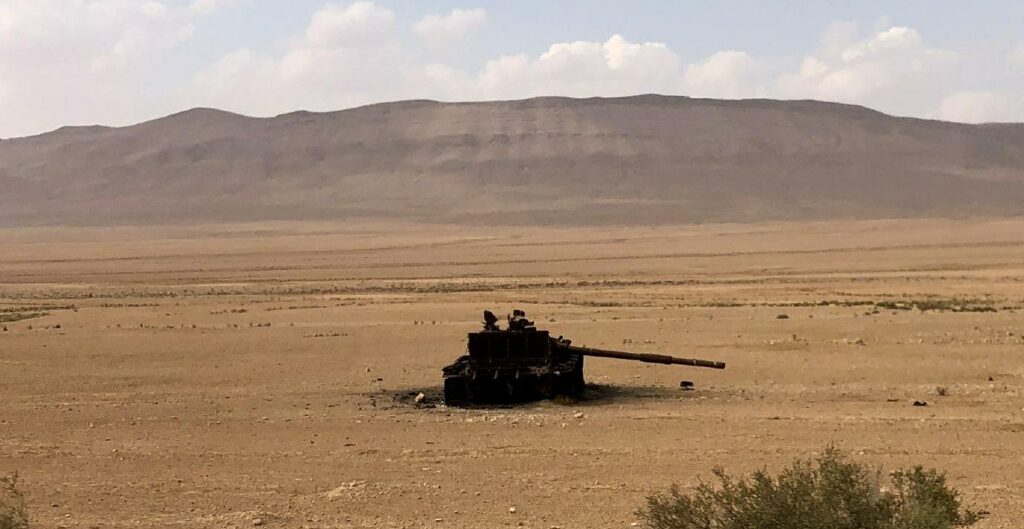
Beyond its cities, Syria is a wide open land. Although most of Syria looked like a desert when I visited in October, Wasim said that in springtime the land blossoms with green grasses and wild flowers.
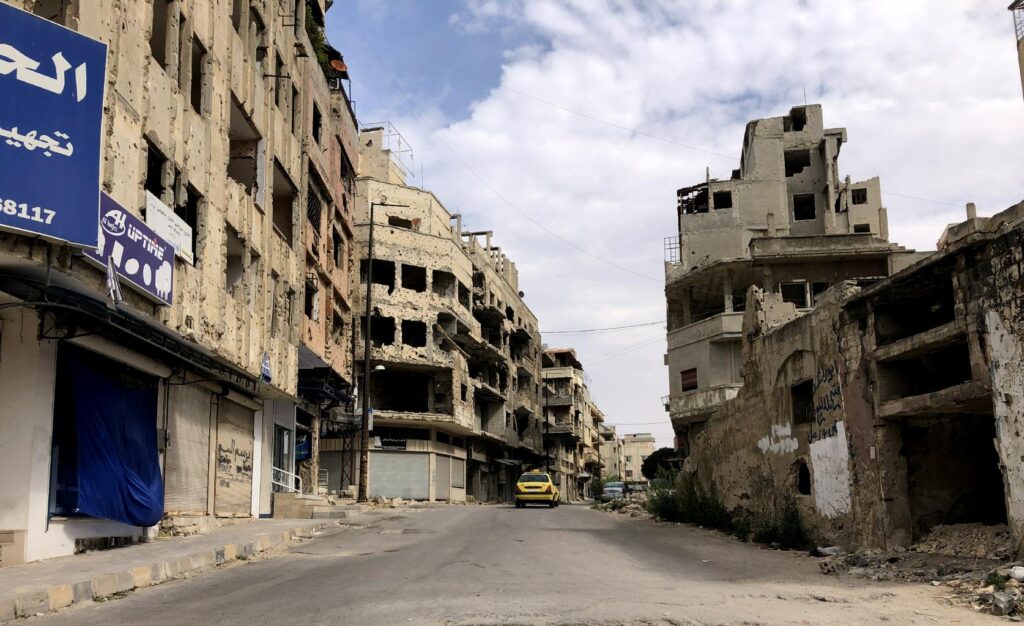
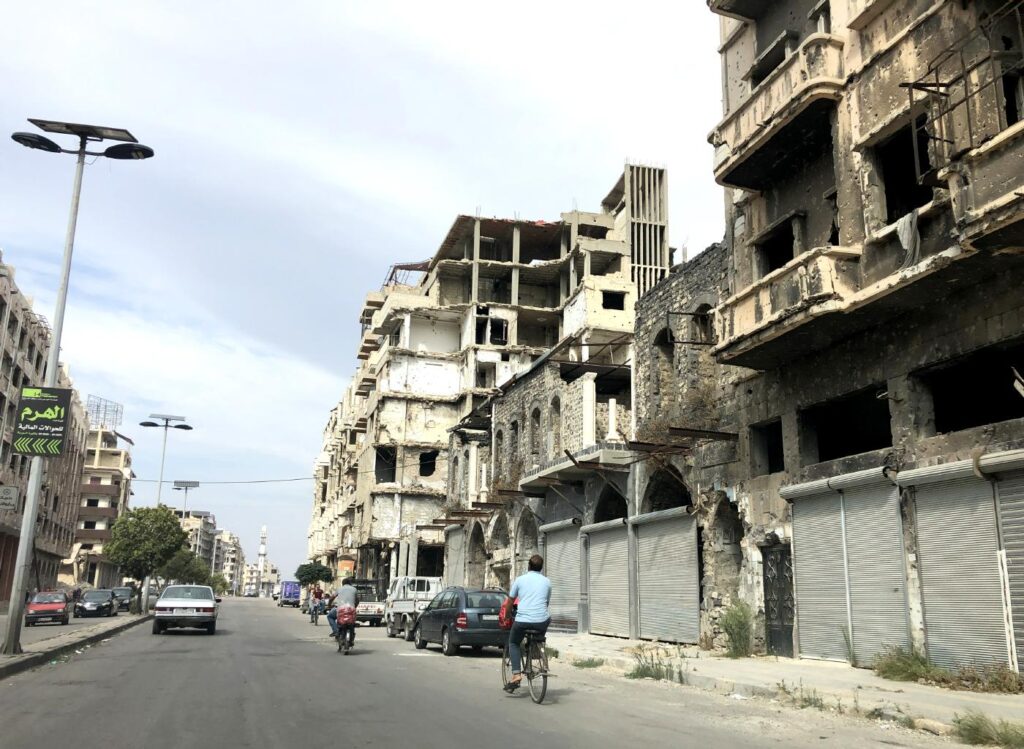
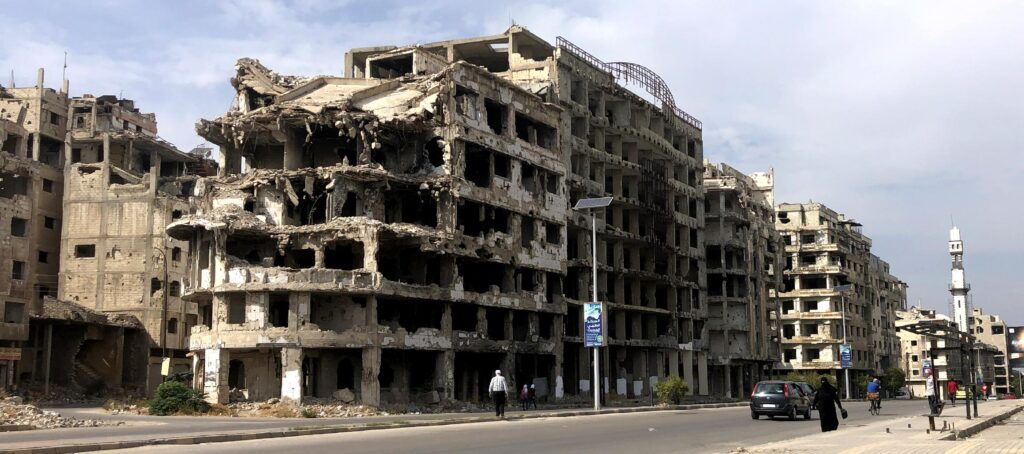
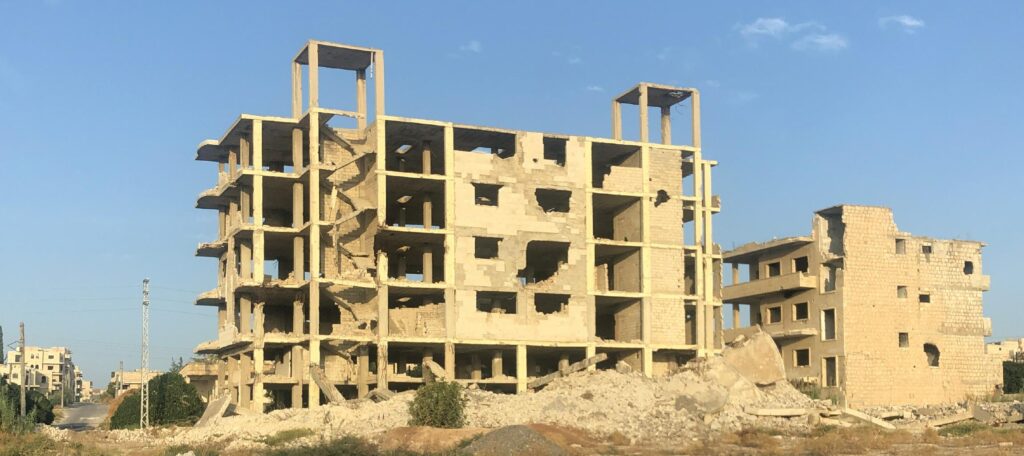
Of course, Syria hasn’t always been a peaceful, safe and happy place. The Syrian Civil War, ISIL and the recent earthquake have left many Syrian cities in ruins. Every city I passed through had bombed-out buildings and abandoned neighborhoods. After a decade of conflict, Syria remains the world’s largest refugee crisis. Since 2011, more than 14 million Syrians have left their homes in search of safety. Half of these refugees are internally displaced. 70% of the population needs humanitarian assistance. 90% live below the poverty line. 5.5 million Syrians have fled to Turkey, Lebanon, Jordan, Iraq or Egypt. Germany is the largest European host country with more than 850,000 Syrian refugees.
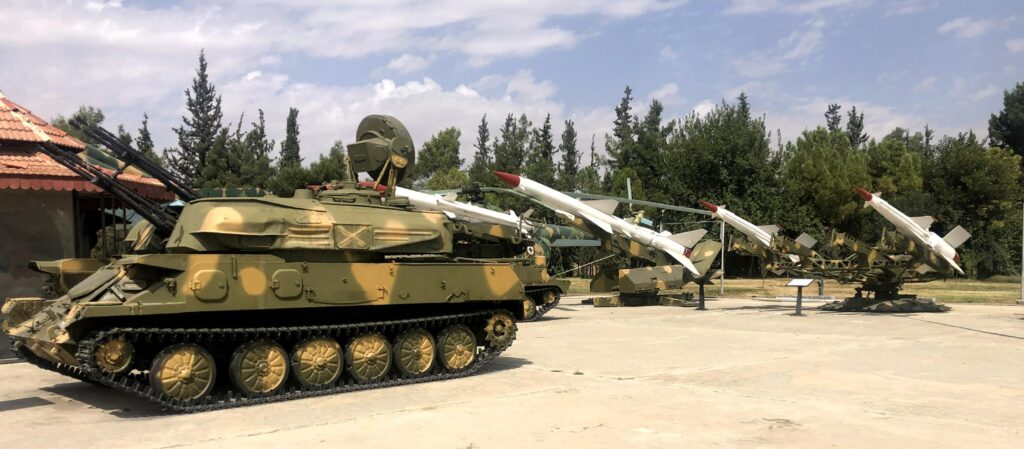
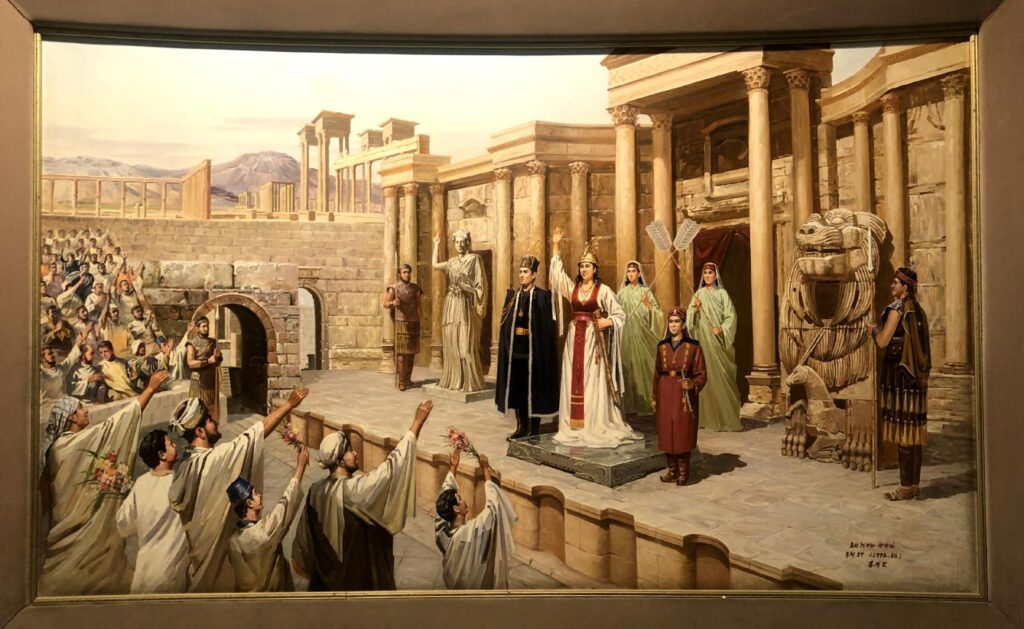
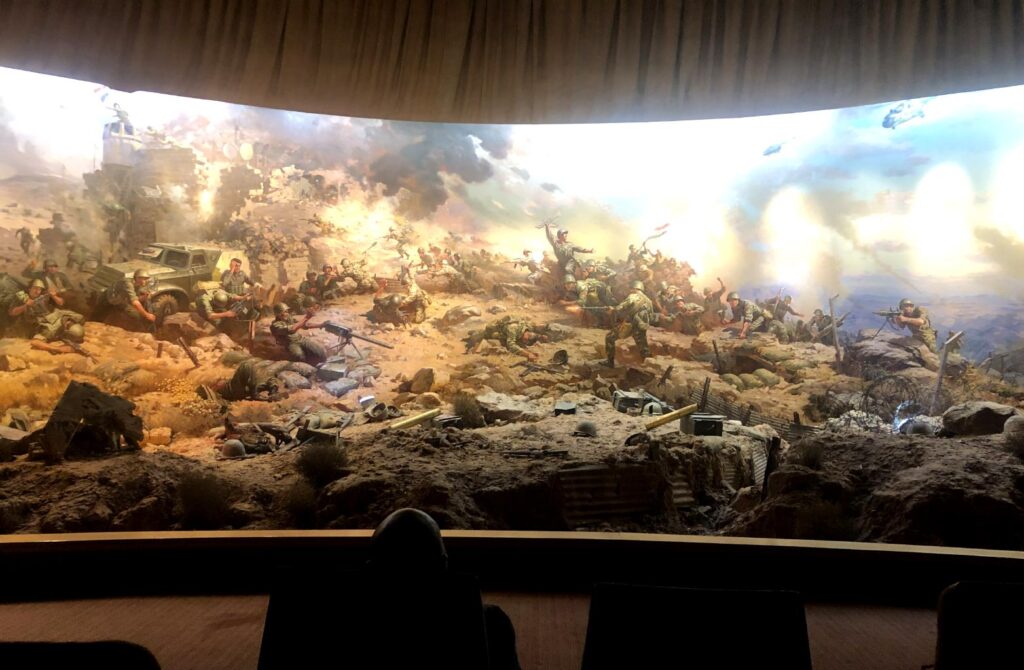
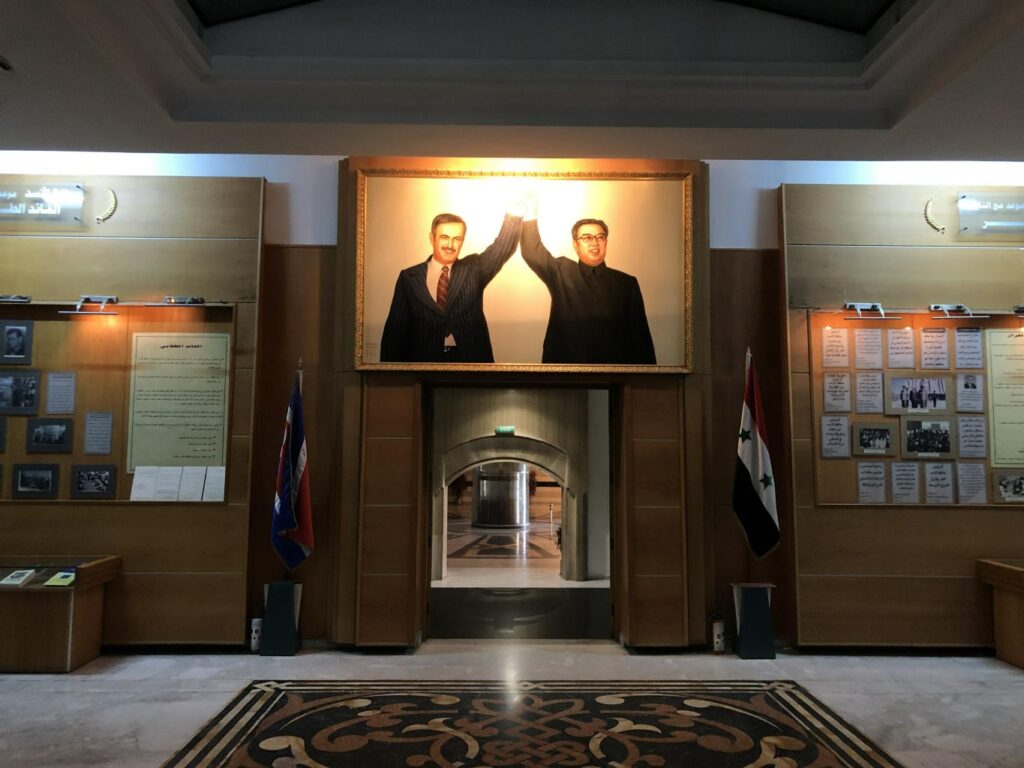
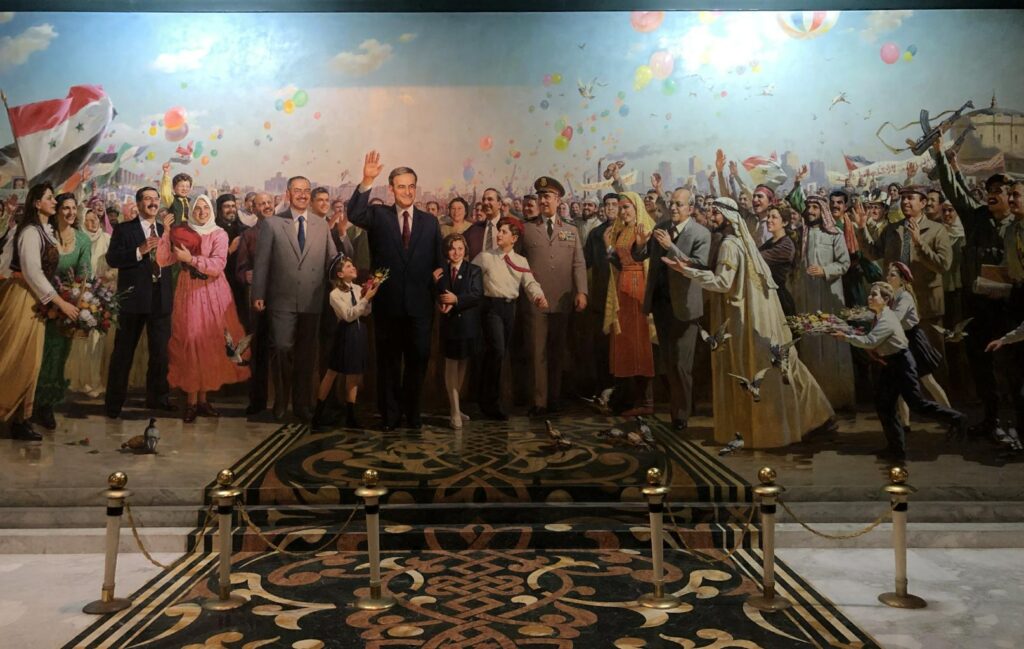
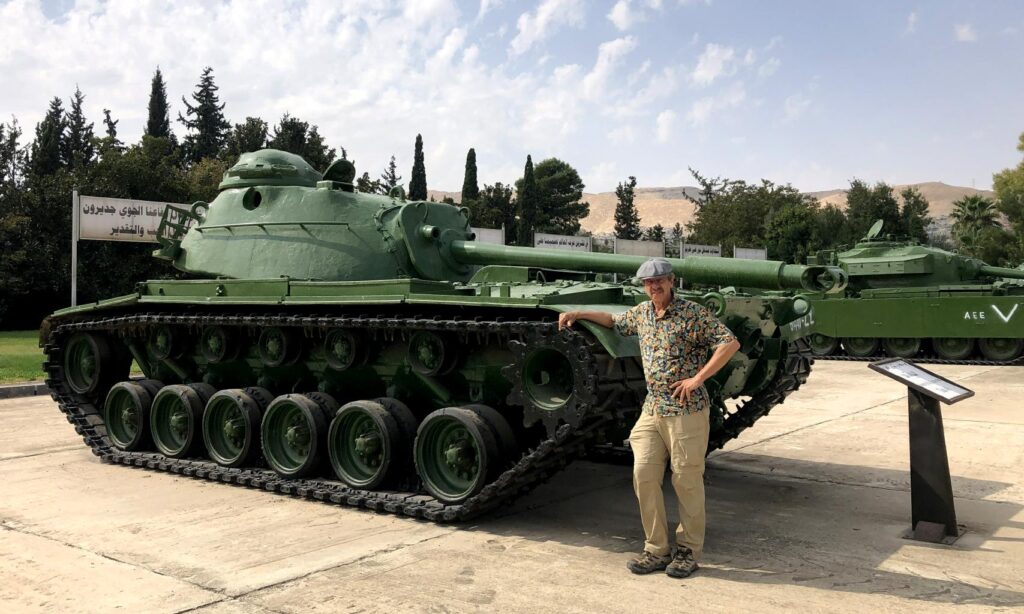
Syria is a dictatorship ruled by the Assad family whose state propaganda is well-established. A chilling example of the extent of this propaganda is the Panorama Museum in Damascus. Here, Syria’s “victory” over Israel in the October War of 1973 is presented in a 360° mural by North Korean artists. The panorama depicts the utter destruction of Israel’s ground and air forces during Syria’s surprise attack on the Golan Heights. Throughout the museum, portraits and trophies glorify Syria’s history and status among the world’s most powerful countries. Outside the museum are Soviet weapons used to destroy and capture Israeli and American tanks and planes. During my tour, I was careful not to inform my museum guide that he had some of his facts wrong.
I didn’t think I’d ever see Syria. Although the US state department warns Americans to stay away from Syria, I never felt unsafe while I was there, and I’m glad I went. Wasim told me that I was the first American tourist he’d met in a decade.
The current crisis in the Gaza began while I was in Syria. My only concern was whether I’d be able to fly out of Beirut. No worries — I departed right on schedule.
As I crossed the border back to Lebanon, I left with an better understanding of Syria.
“People will tell you where they’ve gone. They’ll tell you where to go. But till you get there yourself you never really know..” — Joni Mitchell, Amelia
My next adventure will be to another country that Americans aren’t supposed to visit. Stay tuned!


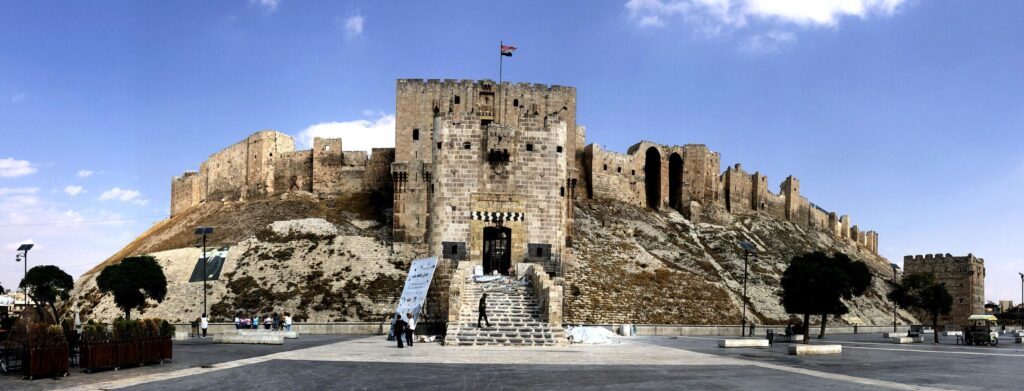
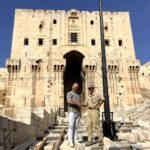

Fascinating! Thank you.
My friend Dr. Big Z, being so blessed by the world’s beautiful scenics and friendly people around the globe, am glad that you made it without the odds.
Hi Nick, I bicycled across the Mid-East in 2007, and Syria was my favorite country. Yes, the ancient ruins and Crusader castles were stunning, but the Syrian people were the highlight of my five-country trip. Two questions for you. 1) Were there tourists from other countries, with America being the paranoid outlier? 2) What was it costing you to eat and sleep in Syria? Thanks!
Fascinating..you are nuts and we’re glad you’re safe ( is ANYWHERE safe lately🤔😳?).
Let us know next time you’ll be in our little ( relatively peaceful) ” neck of the woods”..as always we’d love to see you
Happy trails!
Carol & Craig
i would love to go there however there might be a chance that hezbollah in lebanon will launch an attack on israel. you are a very lucky man and have very good timing.
Thank you Nick for putting a human and historic face on my understanding of Syria. I visited Israel in 1979 and got to travel in the Sinai Peninsula for a week. Isn’t it fascinating how soon your eyes adjust and you begin appreciating the desert landscape? At first all you see is beige sand but then, after a few days, you realize there is a whole range of more subtle colors present as well. Beautiful.